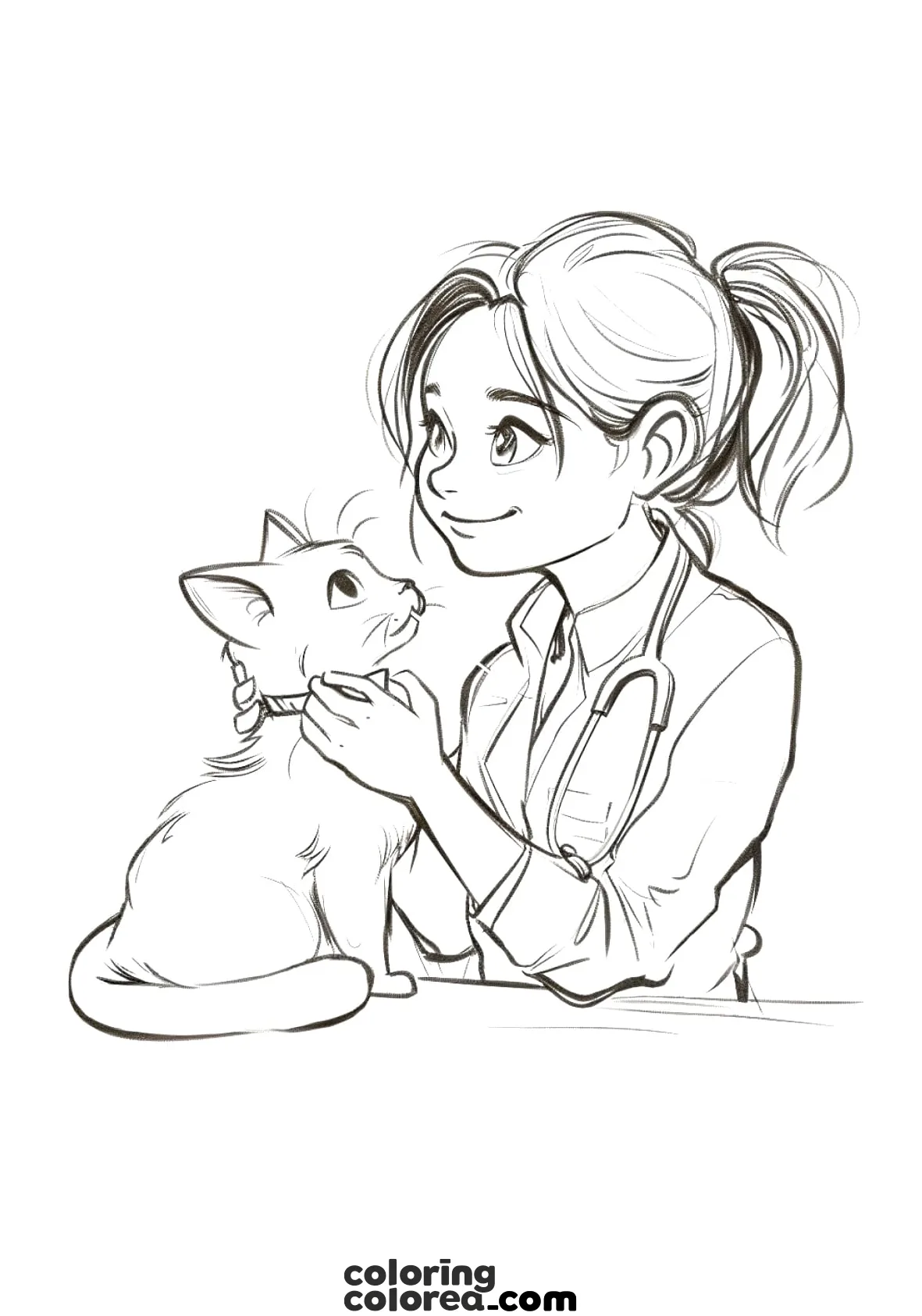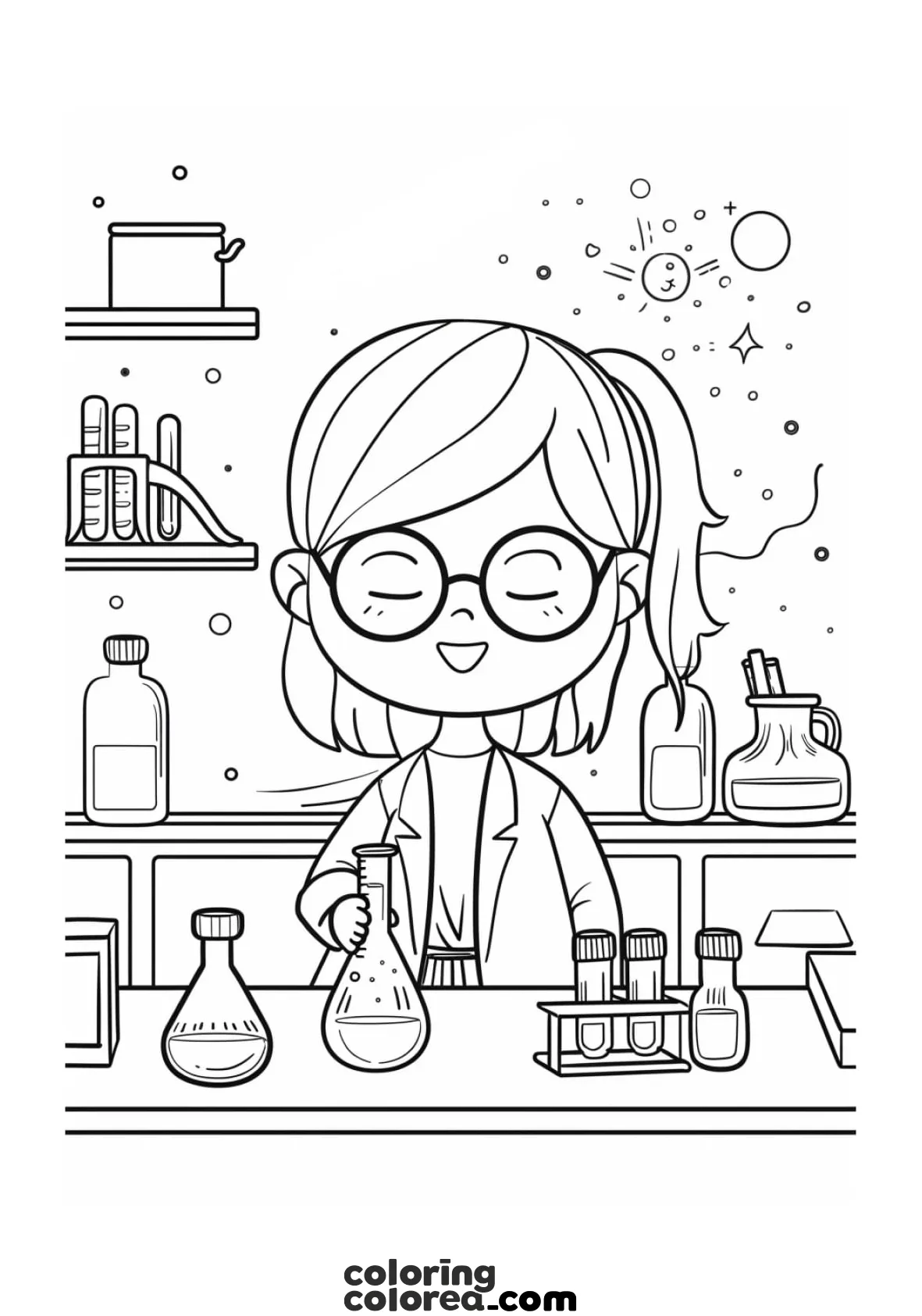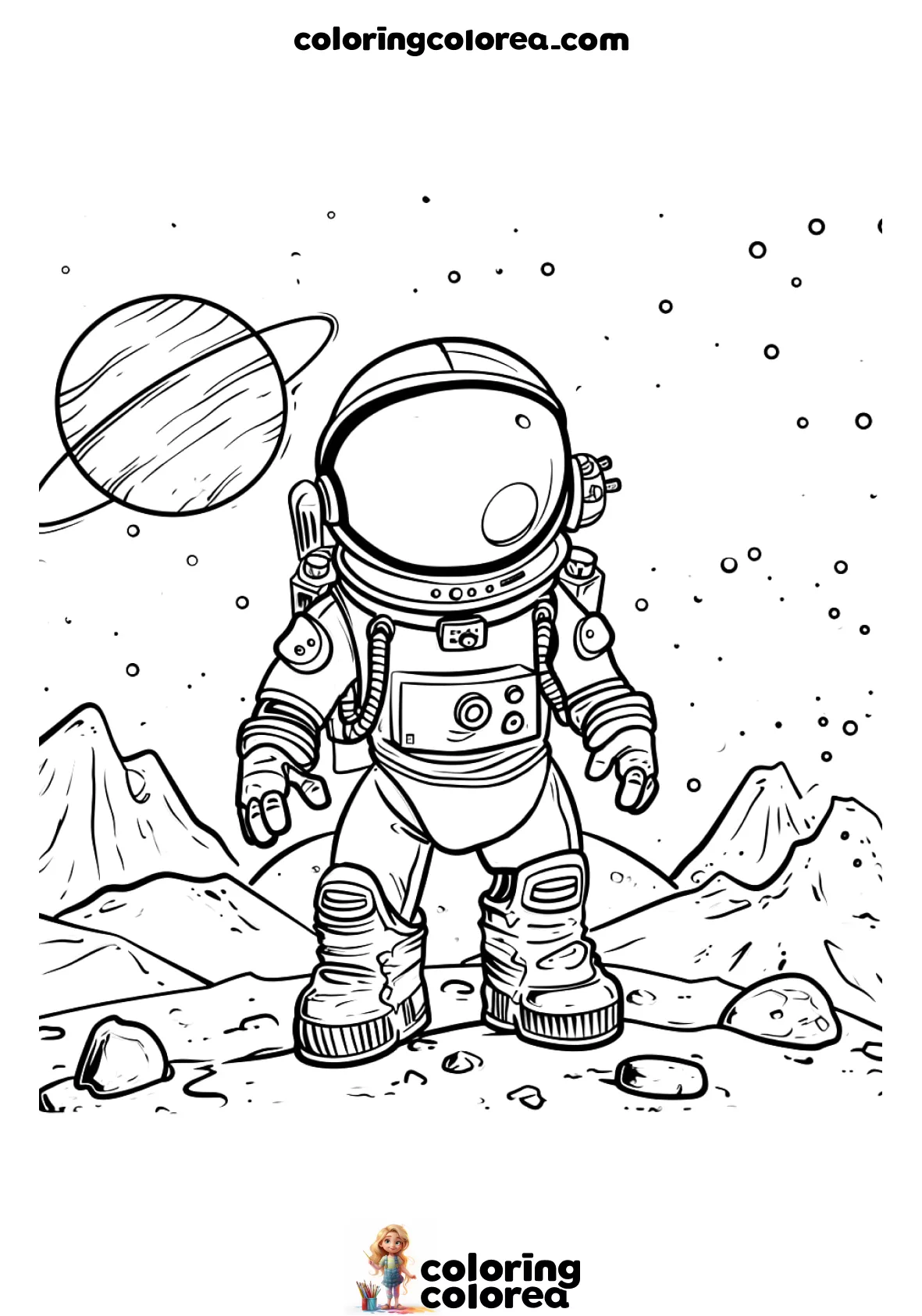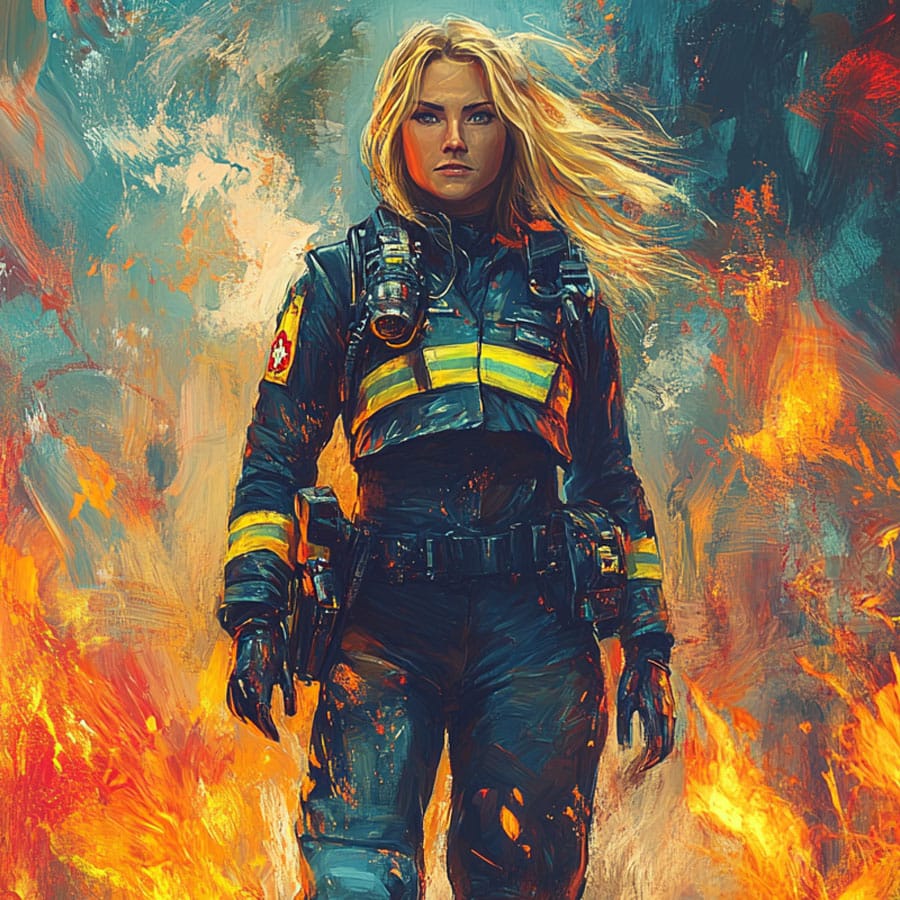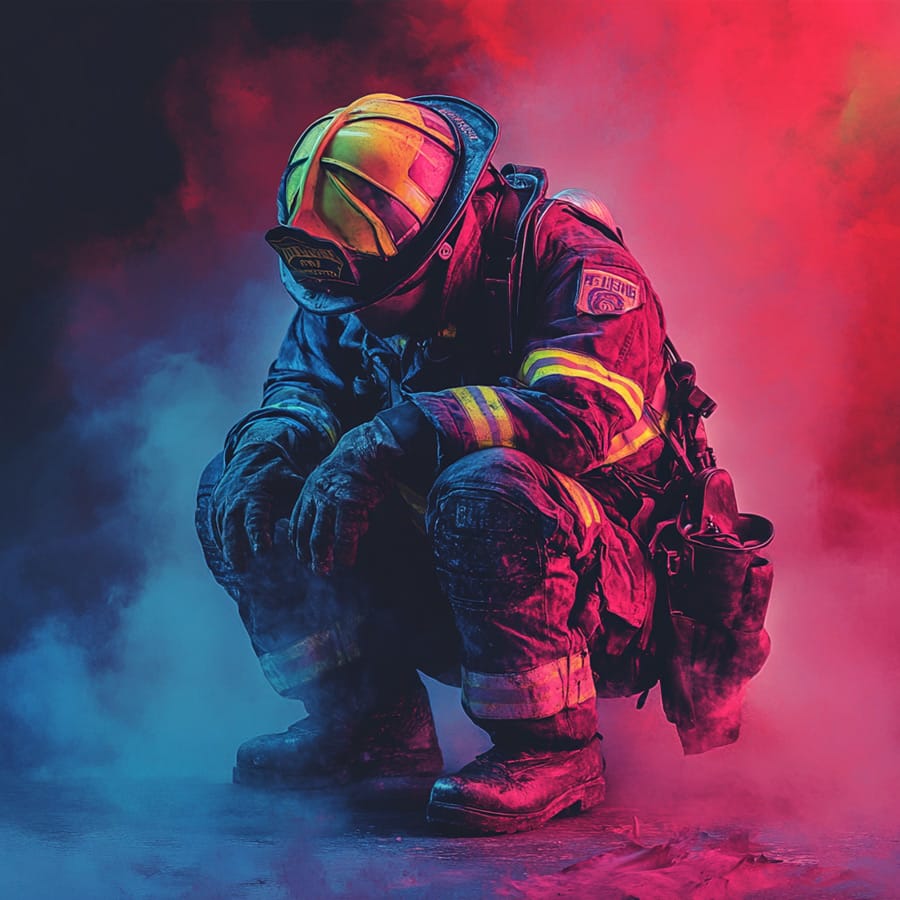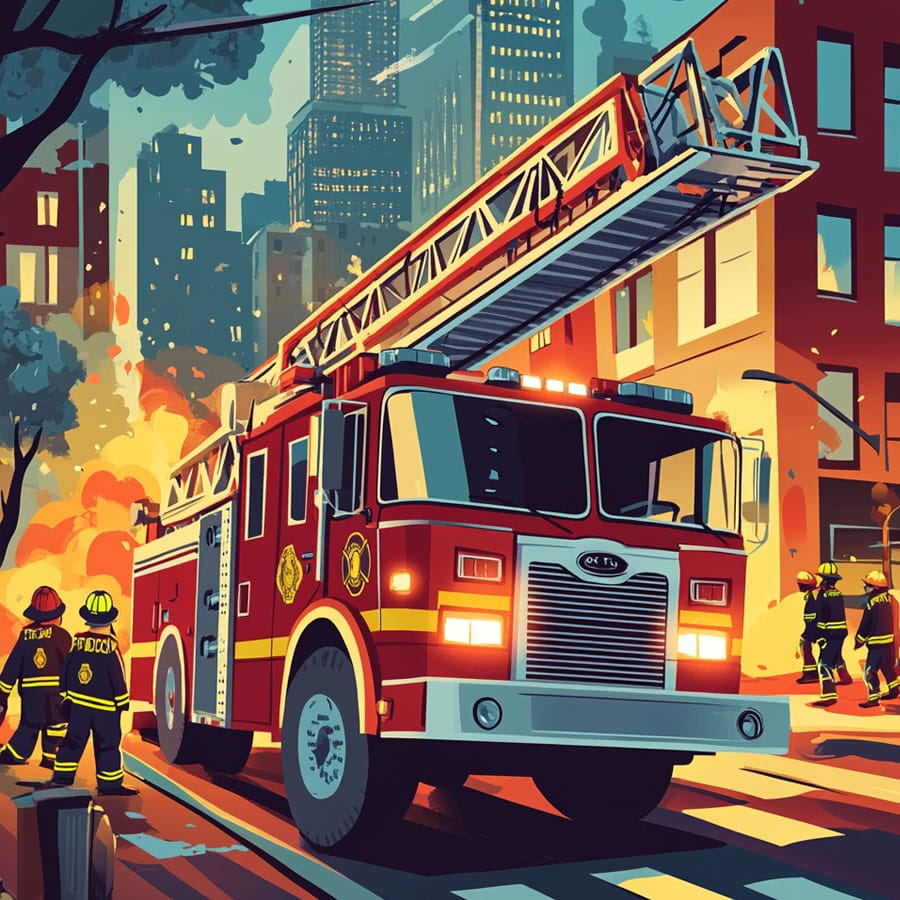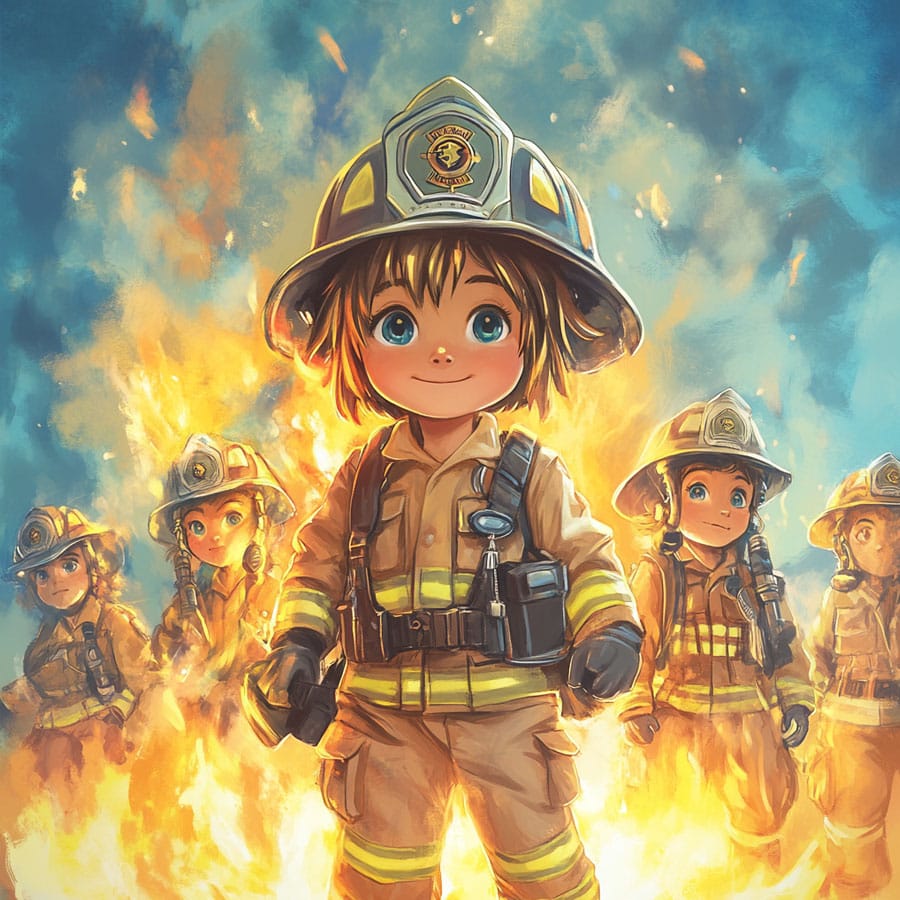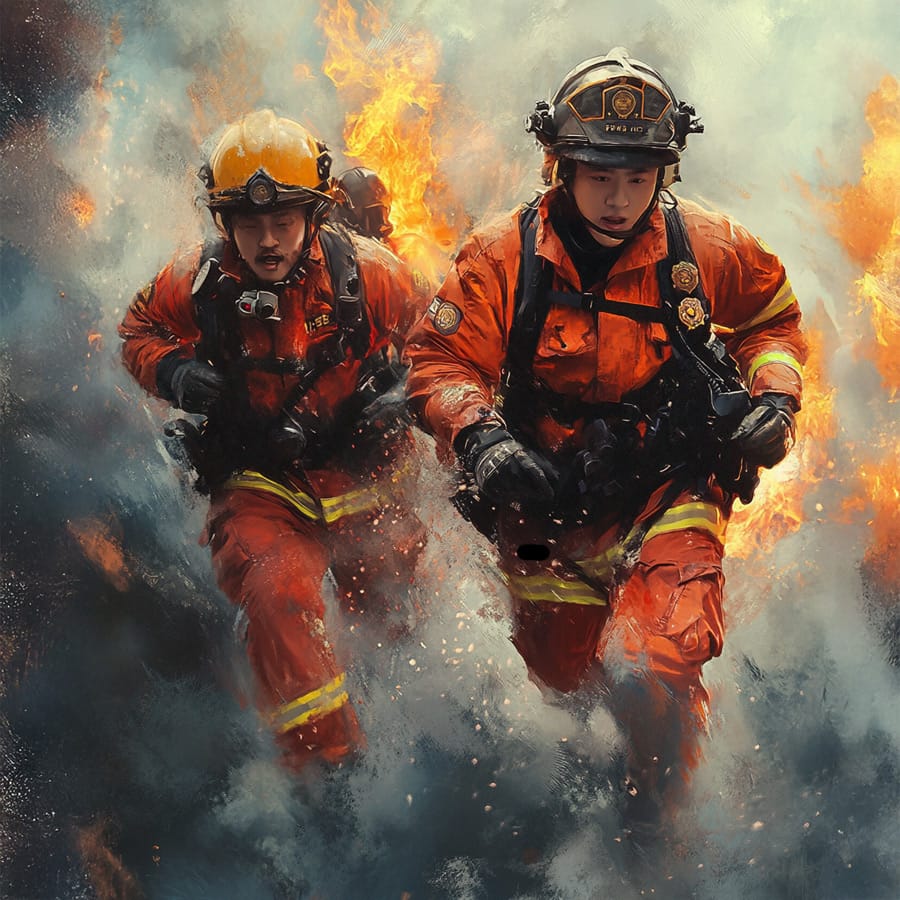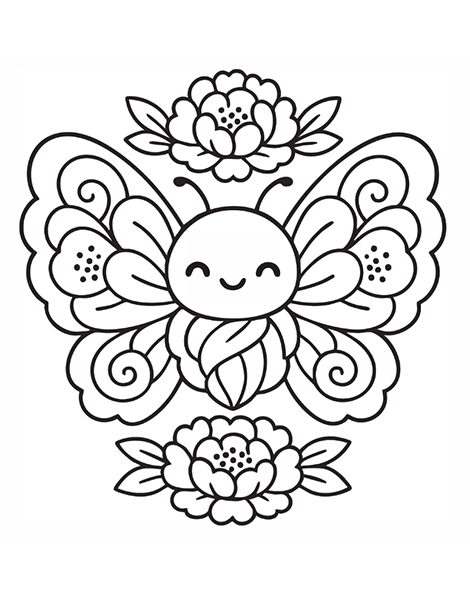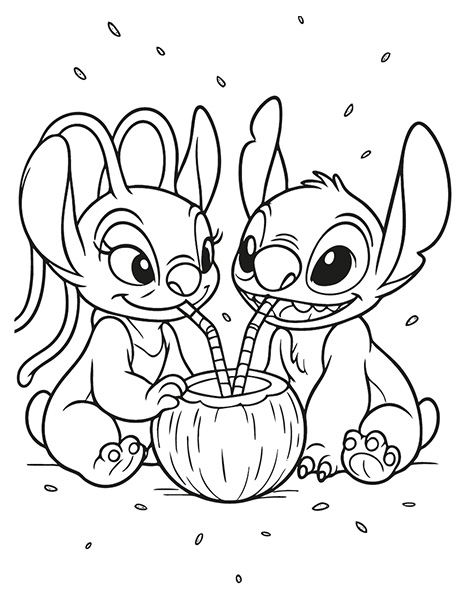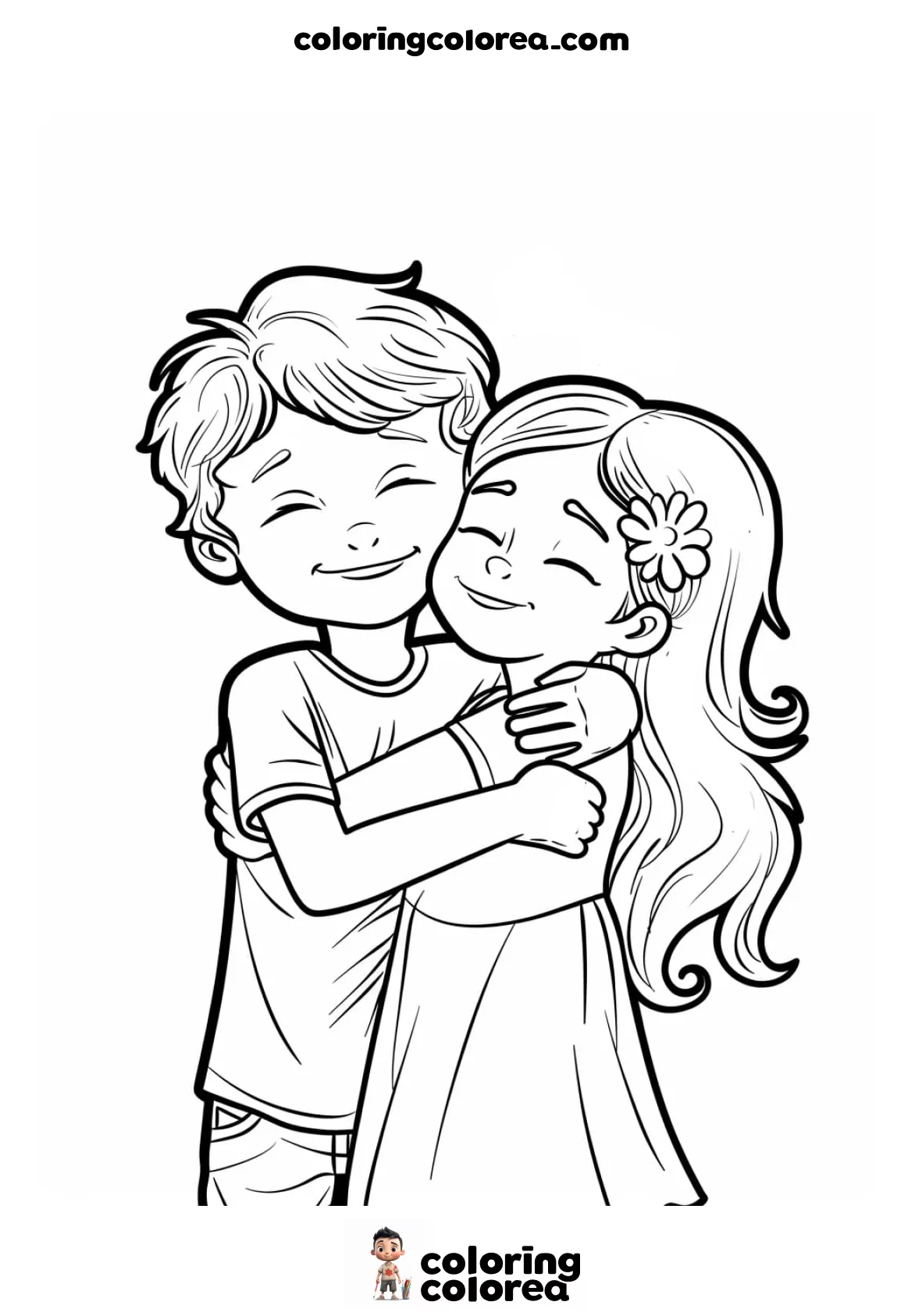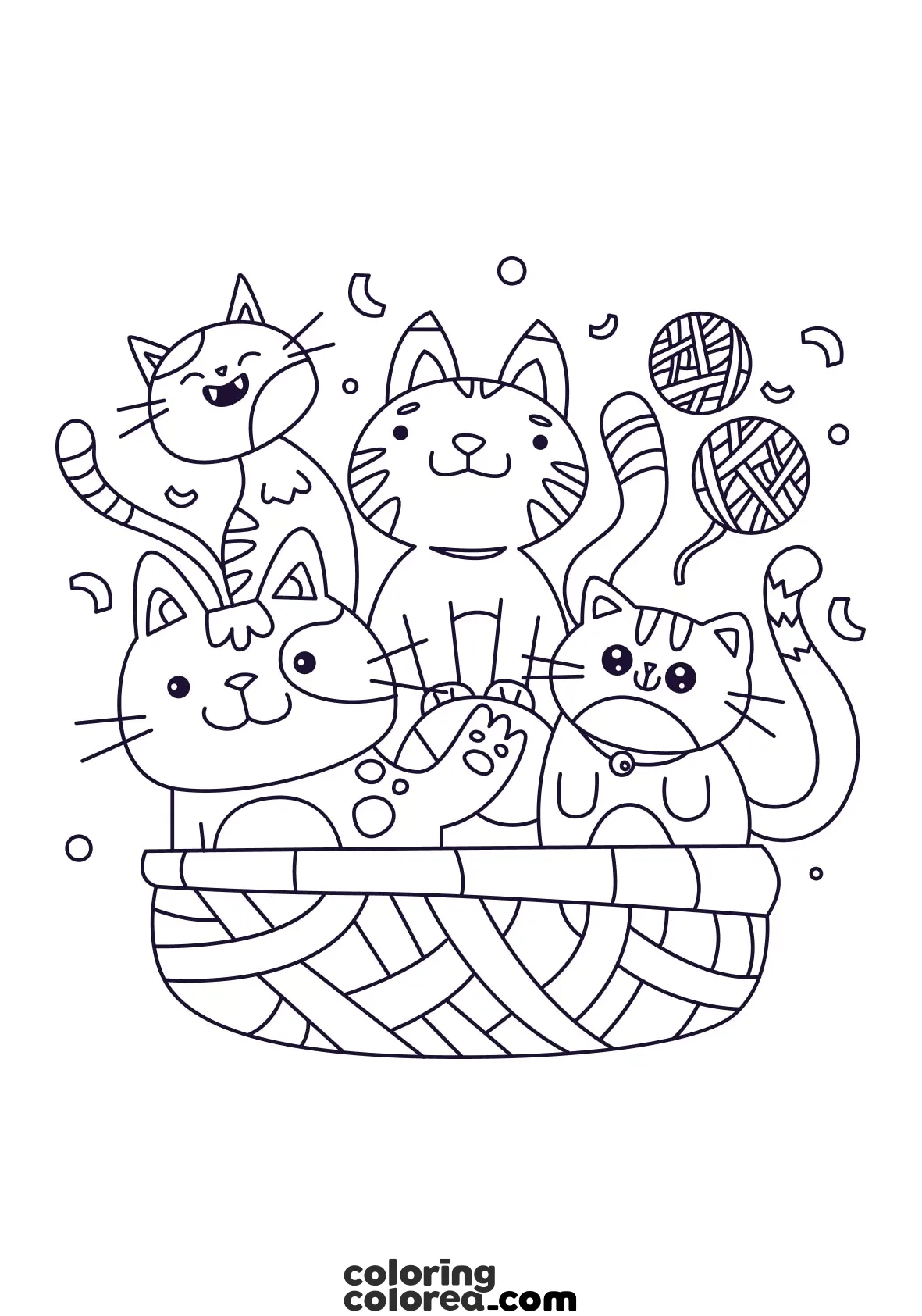Ideas and Tips for Coloring the Firefighter
This is a scene filled with dynamism and drama. From an artistic perspective, the drawing offers great opportunities to work on contrasting elements of fire, nature, and the human figure.
The fire, as the central element of the composition, can be highlighted using warm colors such as red, orange, and yellow. It’s important to use gradient techniques to show the intensity of the flames, making them brighter at the center and softer toward the edges. This helps convey the sensation of heat and movement characteristic of fire. You can also add sparks or reflections in the smoke to emphasize its visual impact.
The firefighter’s figure is a key element that conveys calm and bravery amidst chaos. Their suit should stand out with neutral colors like black, gray, or fluorescent yellow—typical of protective uniforms—contrasting with the warmth of the fire. When coloring details of their equipment, such as the helmet and oxygen tank, paying attention to textures is essential. This can be achieved using firm strokes for metal and softer details for straps and other materials.
The natural environment also plays a crucial role. The trees and vegetation in the background can be represented with muted green and brown tones, highlighting the contrast between nature’s life and the devastation caused by the fire. When coloring smoke, you can opt for grayish and bluish tones that blend softly with the sky, creating a somber and realistic atmosphere.
Finally, you can enhance the message of the image by working on lighting. The light from the fire should reflect on nearby surfaces, such as the firefighter’s uniform and the ground. This interplay of light and shadows not only adds depth to the drawing but also reinforces its dramatic tone. This approach allows you to bring out the implicit message: the heroic struggle against a destructive force but also the fragility of those who face these battles.






